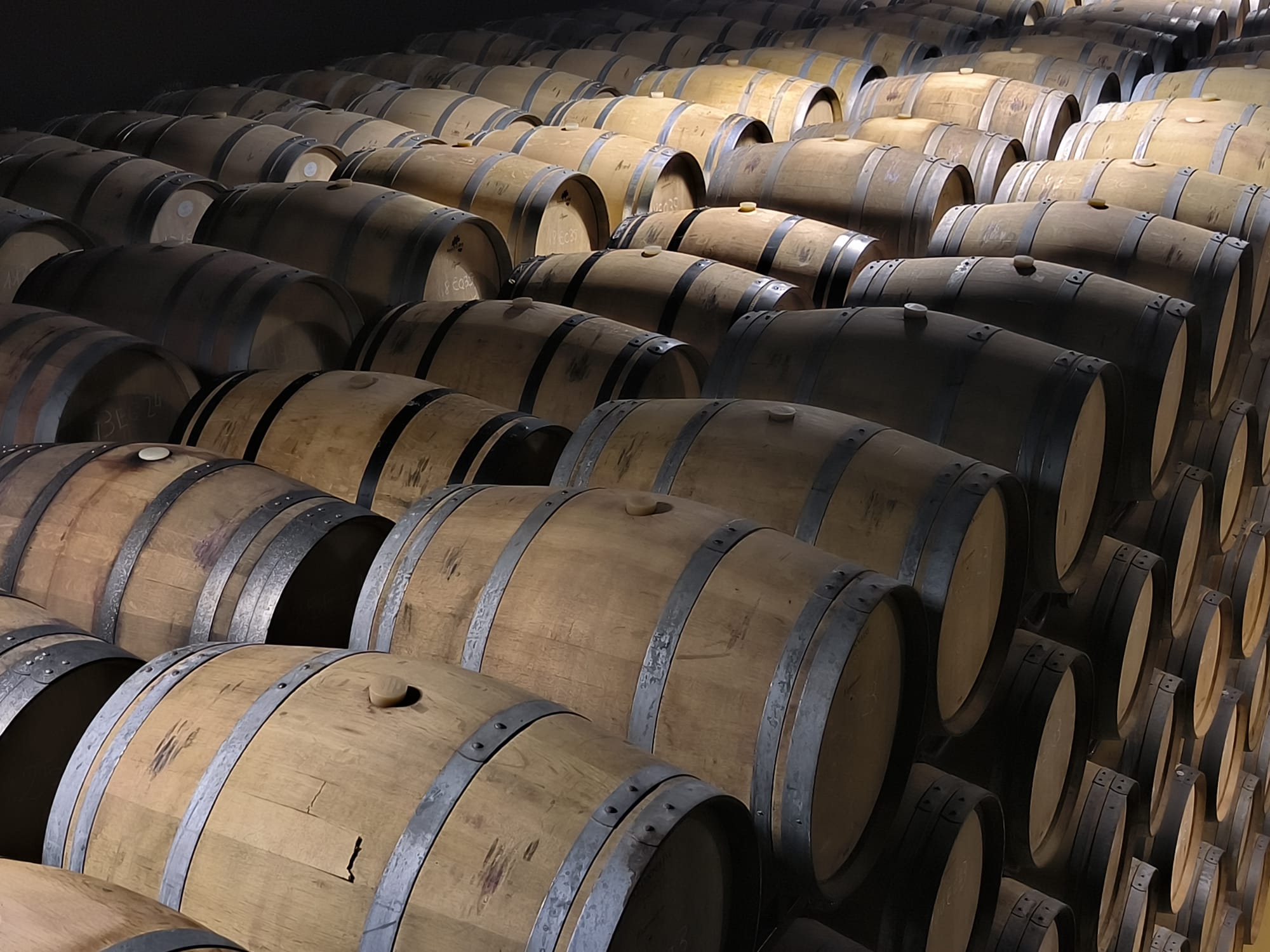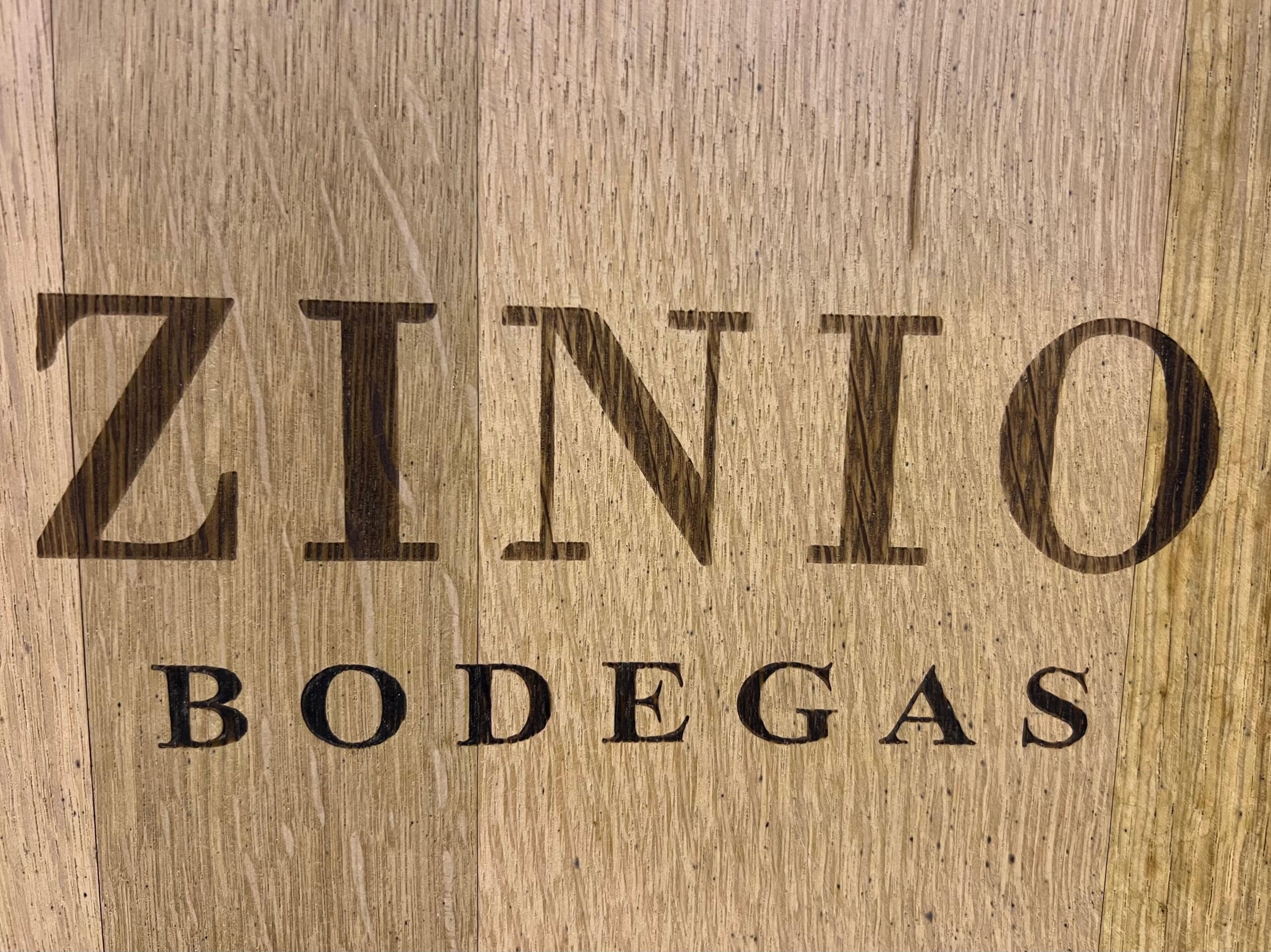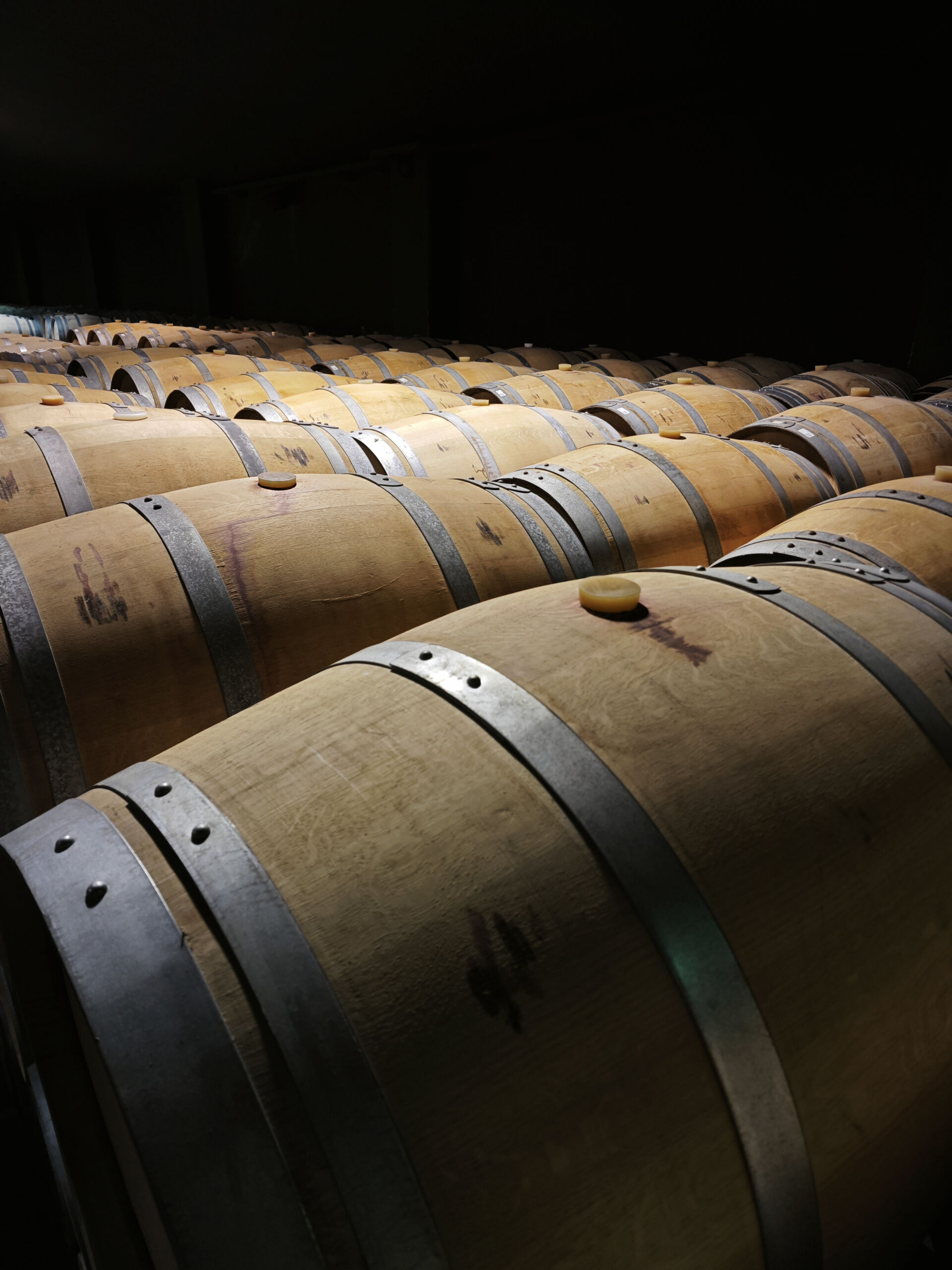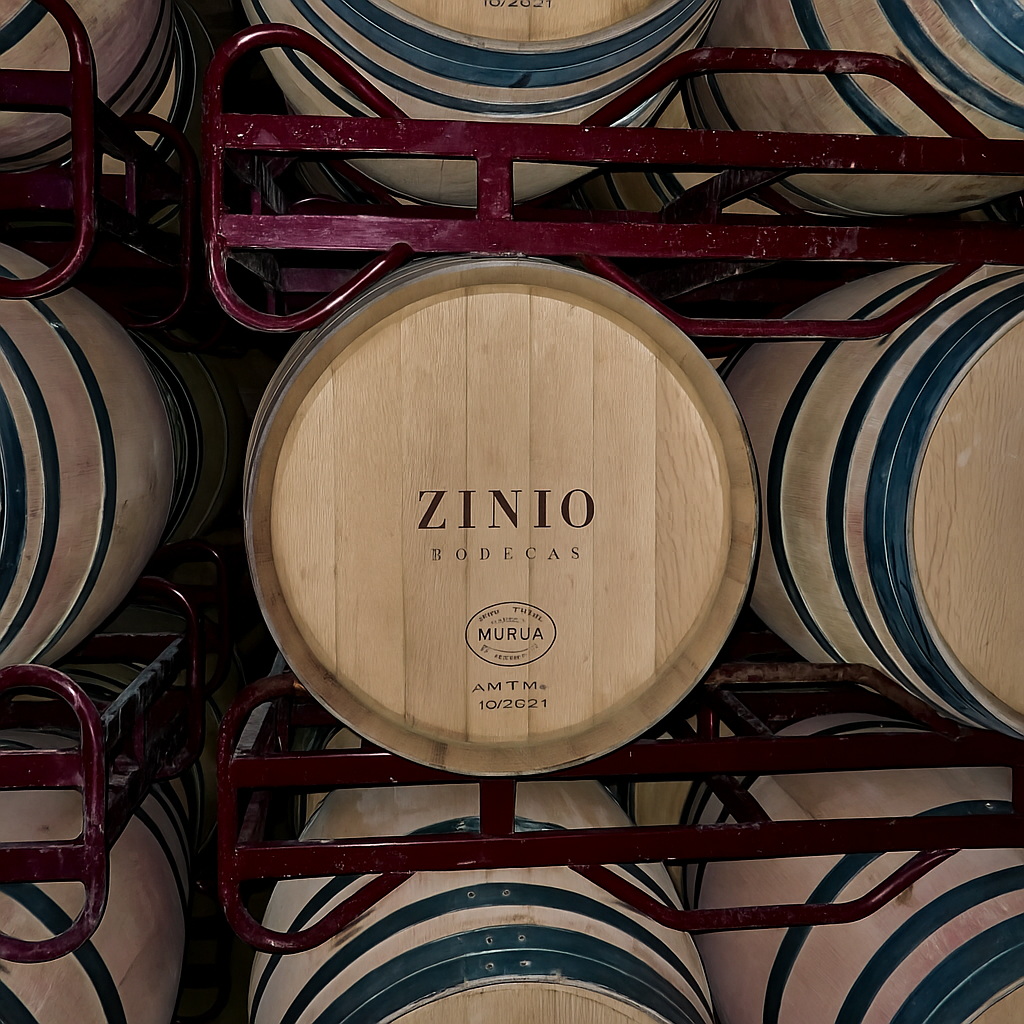The story between wood and wine in Rioja
At Bodegas Zinio, located in Uruñuela, Rioja Alta, we know that every wine is the result of a shared story — one that begins in the soil, continues through the vine, the people who care for it, and, of course, the wood.
The type of barrel in which a wine ages profoundly shapes its character. That’s why today we want to share with you how French and American oak became two fundamental pillars of Rioja’s identity — and of ours.

When Did Rioja Start Using Oak Barrels?
Although Rioja has centuries of winemaking tradition, it was in the 19th century that small oak barrels first began to be used.
After the phylloxera crisis in Bordeaux, French winemakers arrived in Rioja, bringing with them French oak barriques that allowed for the production of more elegant, age-worthy wines.
This marked the birth of the aged Rioja style — wines matured patiently, where wood became the wine’s greatest ally.

The Discovery of American Oak
Soon after, French oak became scarce and expensive, while Spain maintained a strong trade relationship with the Americas. From there came American white oak (Quercus alba) — easier to work with and offering a distinctive aromatic profile.
The result was wine with sweet notes of vanilla, coconut, and caramel — rounder, softer, and more approachable on the palate.
American oak soon became the favorite wood of classic Rioja wineries and, for decades, defined the most traditional Rioja style.

The Return of French Oak
From the 1980s onward, Rioja’s winemakers began to rediscover French oak (Quercus petraea or Q. robur), known for its fine grain and subtlety.
Its slow oxygenation allows for longer, more elegant ageing.
At Zinio, we use both types of oak — and in some cases, we combine them to find the perfect balance between fruit and wood, between tradition and modernity.

Wine Tourism at Zinio: Experience the Essence of Oak
Visiting Bodegas Zinio means discovering how history and nature intertwine.
During our guided tours, you can explore our barrel cellar, breathe in the aroma of oak, and taste wines aged in different types of wood.
You’ll experience how each barrel leaves its own mark on the wine — in its texture, its aromas, its personality.
It’s a unique sensory journey that helps you understand why Rioja wines — and especially those from Zinio — taste so much of time and of the land.